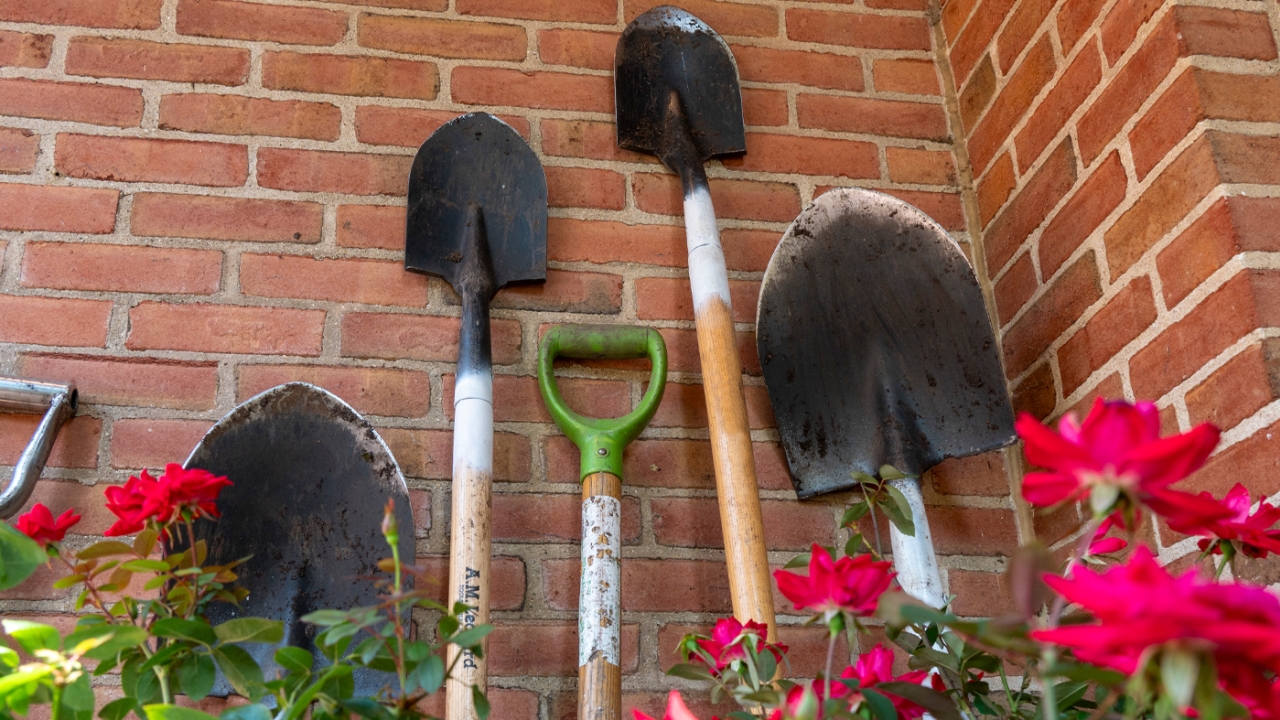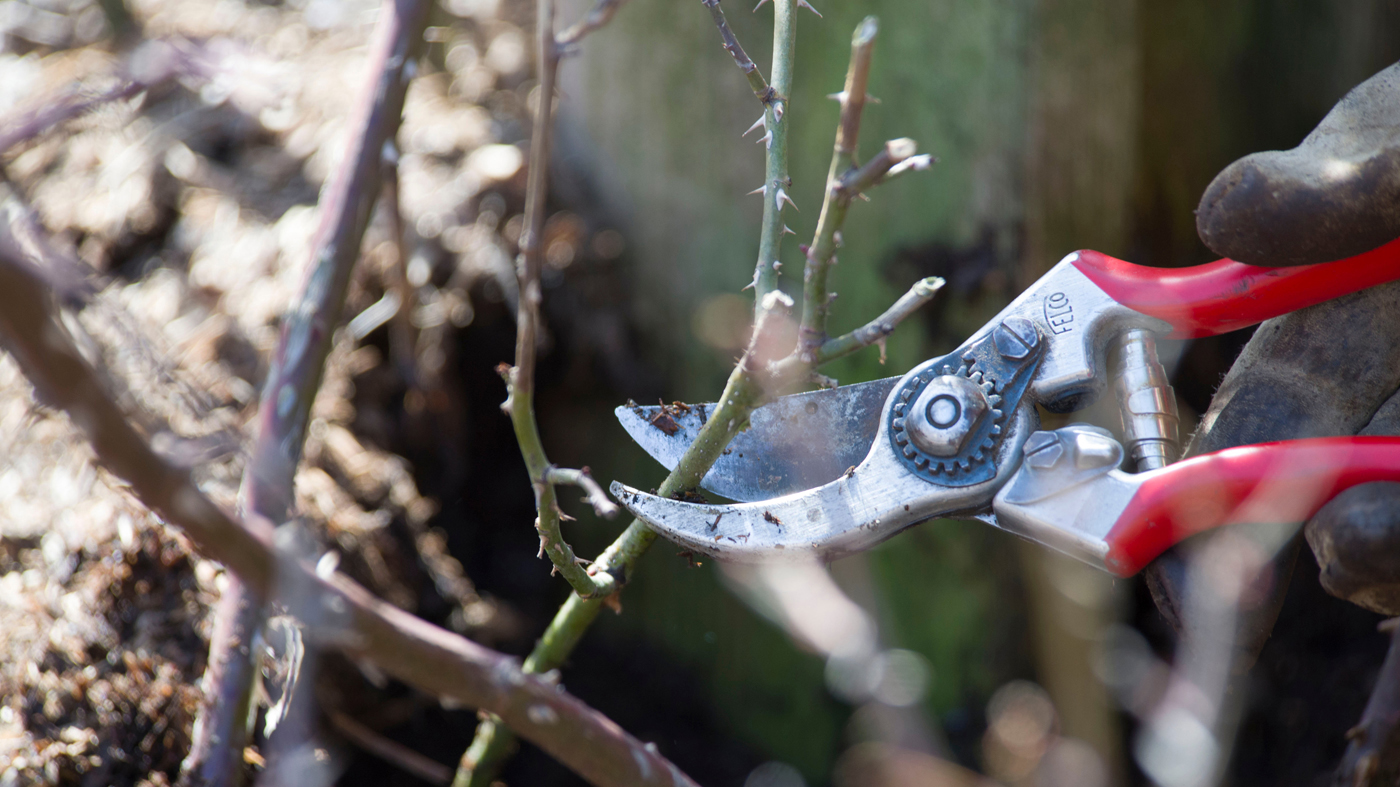

Tips & Techniques
Pruning in Winter
Winter is actually the best time of year to prune your deciduous plants. Wait for a relatively mild, sunny day, get out your pruners, and take a critical look at your trees and shrubs.

As soon as trees and shrubs go into dormancy, pruning can begin, and you can prune up to the time when buds begin to plump up. From mid-November to mid-March, you can shape and thin your deciduous plants in preparation for the spring season ahead. Note an exception: Evergreens, in most situations, should be pruned in the growing season, since they never become fully dormant and may suffer tip burn if pruned in the winter.
It is much easier to prune a plant without its leaves since you can easily see its branching structure. Also, in winter there is less chance of transmitting diseases from one plant to another or attracting insects to fresh pruning wounds. And, since most gardening chores in the Midwest get compressed into the short, intense growing season, it is useful to relegate some of them to winter.
Have a goal when you prune a plant
Think about what you want to do to the tree or shrub you're pruning. Most deciduous pruning should promote a natural style, which means that low-branching trees are not limbed up, tall shrubs are not sheared or topped to make them shorter, and the natural outline of a plant is maintained. The goal is to highlight the plant's natural features, and, ironically, if you do it well, it looks like you didn't do anything at all.
Disinfect your tools and remember safety
Although not as critically important as during the growing season, cleaning tools with a 10 percent solution of rubbing alcohol and water (approximately 2 tablespoons of alcohol to 1 cup of water) helps prevent the spread of disease from cut to cut as you prune.
Wear some kind of eye protection when you prune; it is easy to get poked in the eye. And know your limits. Tree work can be dangerous. If you need to prune large trees or use a chainsaw, you may wish to seek professional help from a certified arborist.
Remove undesirable branches
First, remove all dead or diseased wood, regardless of where it is on the plant. Next, remove all suckers and water sprouts. Suckers are straight, unbranched stems that sprout from the base of a tree. Water sprouts are similar stems, but grow at right angles to the branches. Neither suckers nor water sprouts will develop into natural-looking, well-branched limbs.
Remove crossing or rubbing branches
Start with the largest branches and move progressively to the smallest. There may be cases when you break this rule; for example, leave a large crossing limb that would disfigure the tree if removed. If trees were properly pruned when they were young, you would never have to face this type of situation.
Thin the canopy
Starting at the center and moving to the exterior, thin the branches that make up the dense mass of a tree or shrub. Your purpose is to increase air circulation through the branches and to accentuate the structure of the plant. Never remove more than one-quarter of a plant in a season since that will encourage sucker growth. Thinning is especially important for trees such as crabapples and hawthorns, which are susceptible to fungal diseases.
Work slowly, taking plenty of breaks to step back and look
Is the tree balanced? Does it look symmetrical? Know when to stop; you don't want to hollow out the center. You can always go back and take more off, but you can't put it back on.
Always prune back to a bud or a branch
Never leave a stub or the kind of open ends that result from shearing off the top of a plant. Open ends can create dense horizontal sucker-type growth that ruins the natural branching habit, or they can cause dieback and disease. Cut an undesirable branch just above a bud, keeping in mind that a new branch will grow from that bud. Ideally, the bud should face outward, so the branch will grow toward the exterior of the plant.
When removing a limb from a trunk or other large branch, never cut flush to the trunk. The natural collar should be left on the trunk so the wood can heal properly.
Look for insect problems
Egg masses of tent caterpillars, moths are often visible on tree branches in winter. Remove them by hand or prune out to control insect damage in the spring.
Look for signs of disease
While closely inspecting branches, take the opportunity to check for unusual swellings, open lesions, or darkened areas that could be symptoms of canker and disease.
Want to learn more?
Garden staff members, teach pruning techniques at the Garden throughout the year.
Find a Class Today!

